<!-- TODO add slide numbers & maybe slide name --> ### Heritablity of Human Structural Connectomes 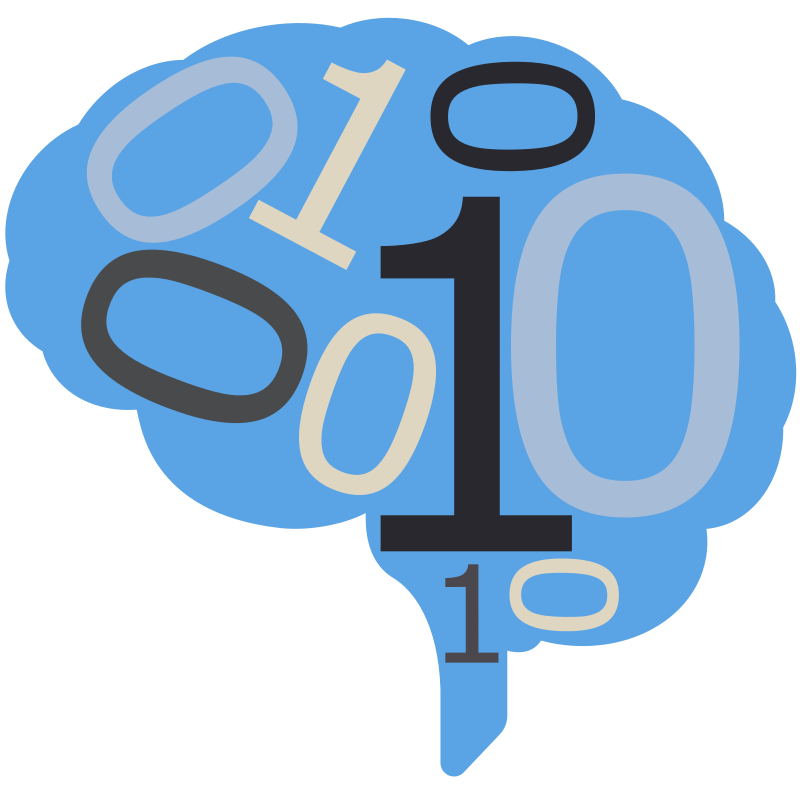 Jaewon Chung --- name:talk ### Outline - [Background](#defn) - [Measuring Heritability](#statistics) - [Discussion](#disc) --- name:defn ### Outline - Background - [Measuring Heritability](#statistics) - [Discussion](#disc) --- ### What is Heritability? - .ye[Heritability]: phenotypic variations due to genetic variations - understand effects of genes (+environment) on brain circuitry - understand neurologic diseases Question: Are the connectivity patterns in human brains heritable? --- ### What is a graph? (aka networks or connectomes) - Vertex = a region of interest - Edges = connectivity measure between a pair of vertices - Diffusion MRI = # of estimated neuronal fibers  --- ### Graph = Adjacency matrix  --- ### What data will we be using? - Human Connectome Project dataset - Identical twins (monozygotic), fraternal twins (dizygotic), siblings - $N\approx 1200$ individuals recruited - Most have diffusion and functional MRI --- name:statistics ### Outline - [Background](#defn) - Measuring Heritability - [Discussion](#disc) --- ### Hypothesis testing: distance correlation (DCorr) - Tests whether $X$ and $Y$ are independent. - Key idea: measures correlation between distance matrices $D^X$ and $D^Y$ - $D_{ij}^X = \delta_X(x_i, x_j), D_ij^Y = \delta_Y(y_i, y_j)$ <br><br> Are differences in pairs of connectomes indepedent of genetics? - Need to compute $D^X$ and $D^Y$ --- ### Distance between graphs: Step 1 - Compute adj. spectral embedding (ASE) on graphs $G, H$ - Embeddings = latent positions - ASE$(G) = \hat{X}$, ASE$(H) = \hat{Y}$ - $\hat{X}, \hat{Y}\in\mathbb{R}^{N\times d}$ <center> 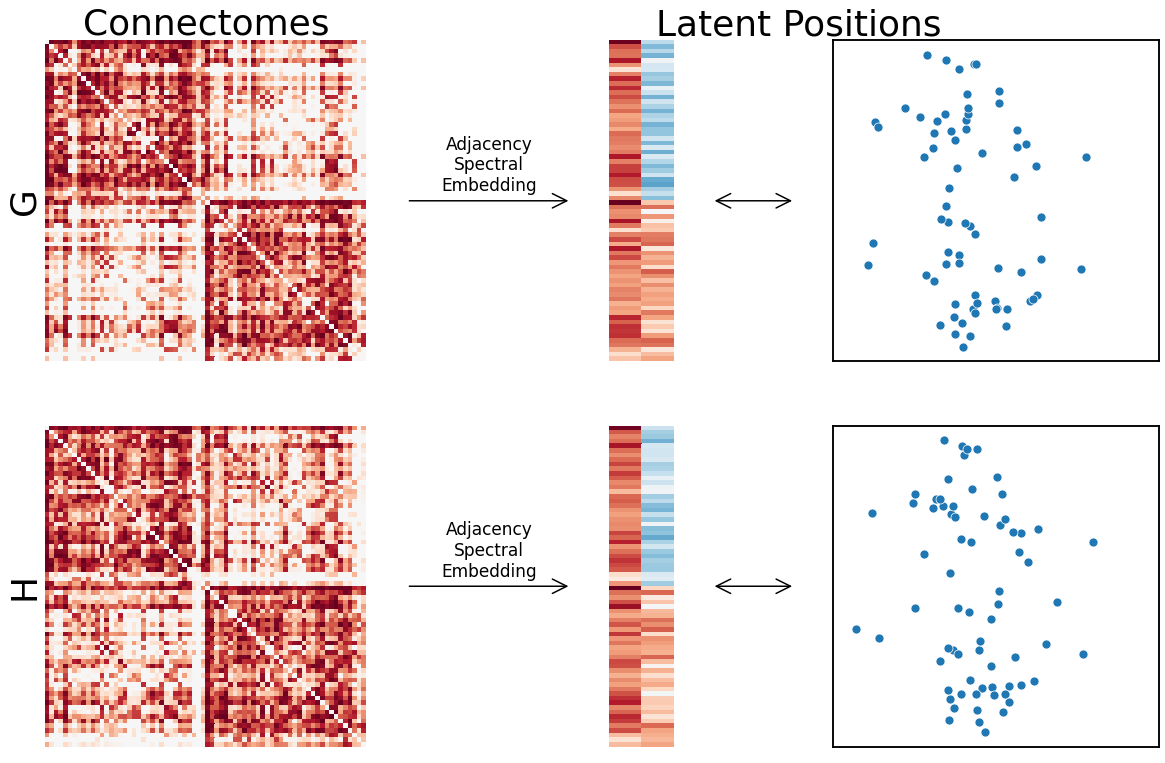 </center> --- ### Distance between graphs: Step 2 - Distance = Frobenius norm of difference in latent positions - $\delta_X(G, H) = ||\hat{X}R - \hat{Y}||_F$ <center>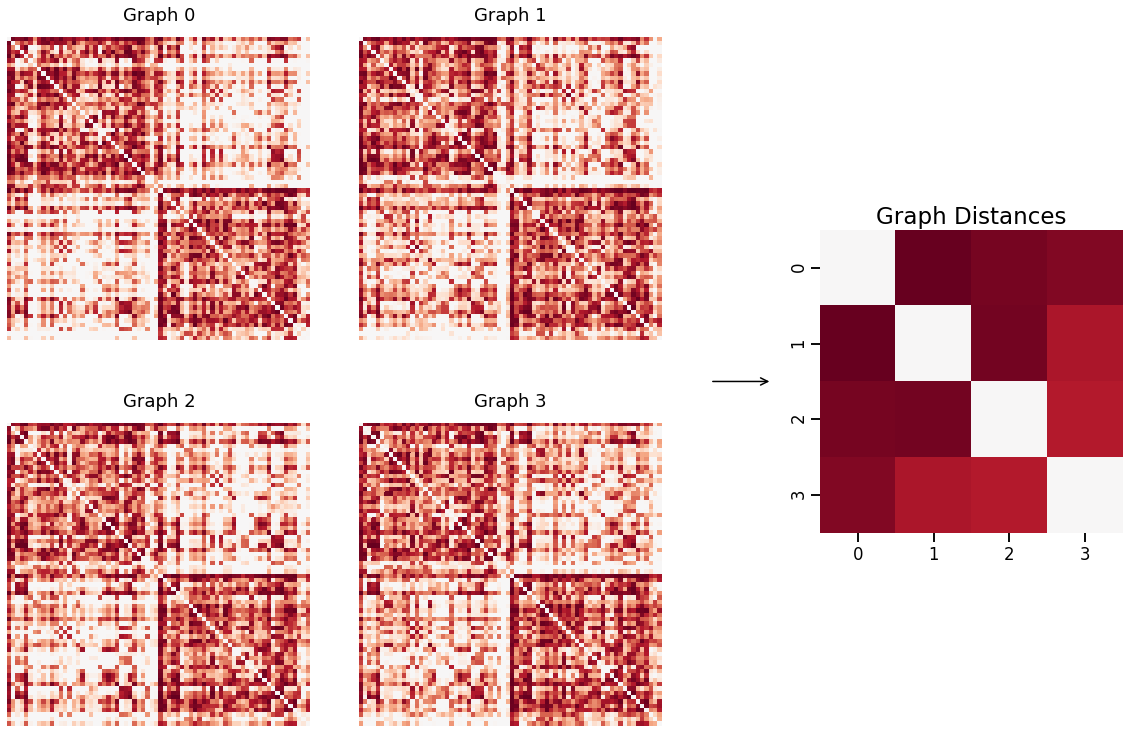</center> High distance: pair of graphs are less similar (or more dissimilar) --- ### What is genetic distance? - Encode via labels - $\delta_Y(y_i, y_j) = 0$ if monozygotic (or self) - $\delta_Y(y_i, y_j) = 1$ if dizygotic/sibling - $\delta_Y(y_i, y_j) = 2$ if unrelated <center>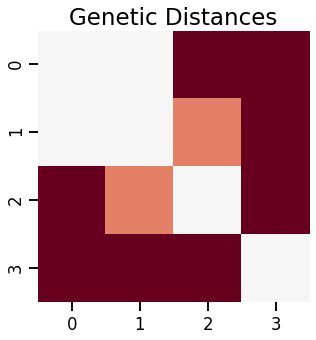</center> --- ### Are the connectome and genetics distances independent? -- <br><br><br><br> <center>No (reject null)</center> --- ### Distribution of distances are ordered <center> 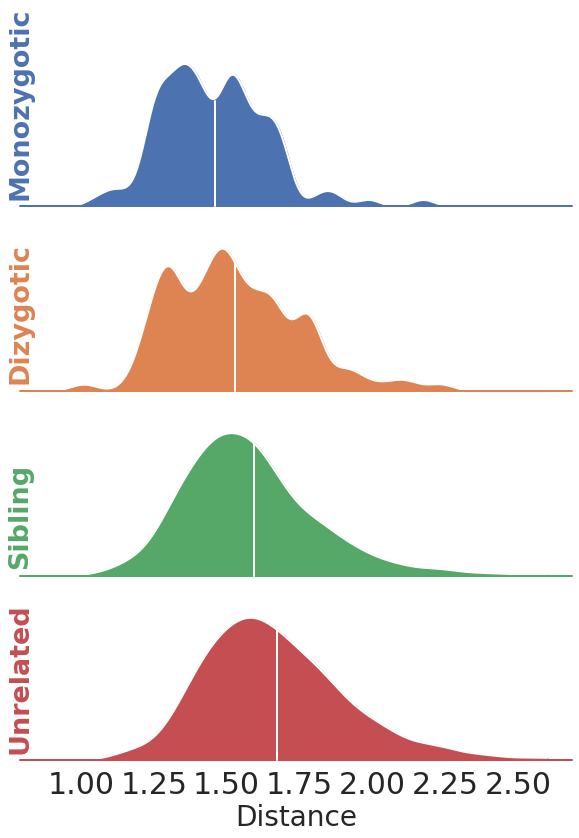 </center> --- ### Mann-Whitney test <table border="1" class="dataframe"> <thead> <tr style="text-align: right;"> <th></th> <th>P-value</th> </tr> </thead> <tbody> <tr> <th>MZ < DZ</th> <td>1.647243e-02</td> </tr> <tr> <th>MZ < Sibling</th> <td>2.302542e-08</td> </tr> <tr> <th>MZ < Unrelated</th> <td>9.732951e-19</td> </tr> <tr> <th>DZ < Sibling</th> <td>1.042699e-02</td> </tr> <tr> <th>DZ < Unrelated</th> <td>1.154470e-08</td> </tr> <tr> <th>Sibling < Unrelated</th> <td>1.060595e-13</td> </tr> </tbody> </table> Caveat: samples are not independent --- ### What about confounders? - Studies show anatomical features are heritable - e.g. brain volume - Prior results explained by anatomy? --- ### Are the covariates themselves heritable? - Features: brain volume, four measurements of diffusivity - Covariate distance: $\delta_Z(z_i, z_j) = ||z_i - z_j||_F$ - DCorr(covariate distance, genetic distances) = <font color="red">reject null</font> <center> 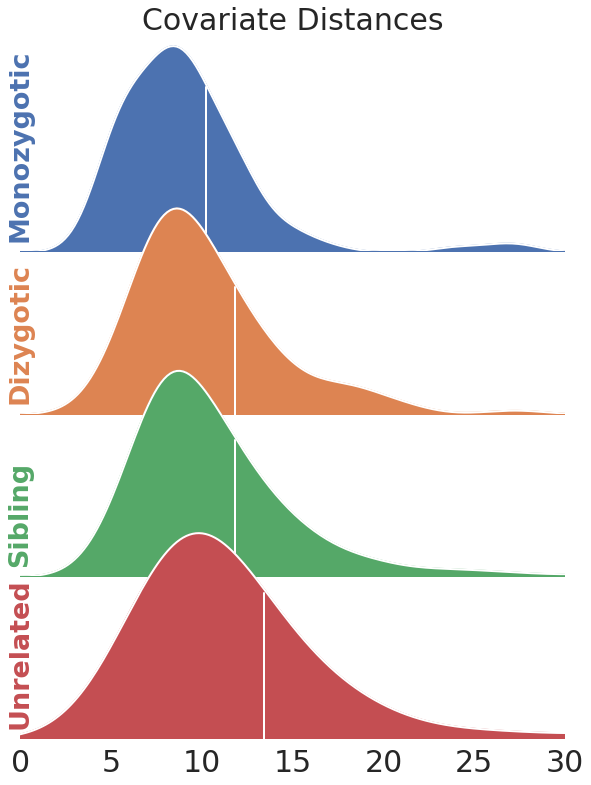 </center> --- ### Mann-Whitney test <table border="2" class="table"> <thead> <tr style="text-align: right;"> <th></th> <th>P-values</th> </tr> </thead> <tbody> <tr> <th>MZ < DZ</th> <td>1.074841e-02</td> </tr> <tr> <th>MZ < Sibling</th> <td>3.092601e-04</td> </tr> <tr> <th>MZ < Unrelated</th> <td>1.462330e-08</td> </tr> <tr> <th>DZ < Sibling</th> <td>3.345203e-01</td> </tr> <tr> <th>DZ < Unrelated</th> <td>4.825626e-03</td> </tr> <tr> <th>Sibling < Unrelated</th> <td>3.549662e-06</td> </tr> </tbody> </table> --- ### Conditional Distance Correlation (CDCorr) - Same as DCorr, but we now test $X \perp Y | Z$ - CDCorr(connectome distances, genetic distances | covariate distances) = <font color="red">reject null</font> --- ### Finding “non-heritable” Induced Subgraph - Subgraph = graph formed from subset of vertices - Motivation: heritability explained by small subset of vertices? - Repeat CDCorr for each vertex, discard vertices with small p-value <center> 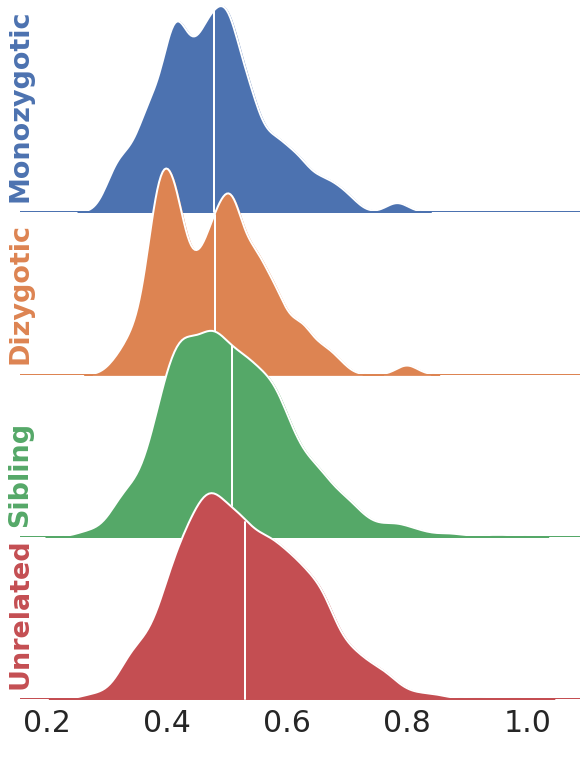 </center> --- ### Mann-Whitney Test <table border="1" class="dataframe"> <thead> <tr style="text-align: right;"> <th></th> <th>P-value</th> </tr> </thead> <tbody> <tr> <th>MZ < DZ</th> <td>4.237065e-01</td> </tr> <tr> <th>MZ < Sibling</th> <td>3.990682e-03</td> </tr> <tr> <th>MZ < Unrelated</th> <td>9.618273e-07</td> </tr> <tr> <th>DZ < Sibling</th> <td>6.148544e-03</td> </tr> <tr> <th>DZ < Unrelated</th> <td>1.987379e-06</td> </tr> <tr> <th>Sibling < Unrelated</th> <td>7.779698e-06</td> </tr> </tbody> </table> --- class: middle .center[questions?] --- ### Acknowledgements <div class="small-container"> <img src="faces/jovo.png"/> <div class="centered">Josh Vogelstein</div> </div> <div class="small-container"> <img src="faces/cep.png" /> <div class="centered">Carey Priebe</div> </div> <div class="small-container"> <img src="faces/ebridge.jpg" /> <div class="centered">Eric</div> </div> <div class="small-container"> <img src="faces/jesus.jpg"/> <div class="centered">Jesus</div> </div> <div class="small-container"> <img src="faces/jayanta.jpg"/> <div class="centered">Jayanta</div> </div> <div class="small-container"> <img src="faces/pedigo.jpg"/> <div class="centered">Ben</div> </div> <div class="small-container"> <img src="faces/loftus.jpg"/> <div class="centered">Alex</div> </div> <div class="small-container"> <img src="faces/ross.jpg"/> <div class="centered">Ross</div> </div> <img src="images/funding/nsf_fpo.png" STYLE="HEIGHT:95px;"/> <img src="images/funding/nih_fpo.png" STYLE="HEIGHT:95px;"/> <img src="images/funding/darpa_fpo.png" STYLE=" HEIGHT:95px;"/> <img src="images/funding/iarpa_fpo.jpg" STYLE="HEIGHT:95px;"/> <img src="images/funding/KAVLI.jpg" STYLE="HEIGHT:95px;"/> <img src="images/funding/schmidt.jpg" STYLE="HEIGHT:95px;"/>